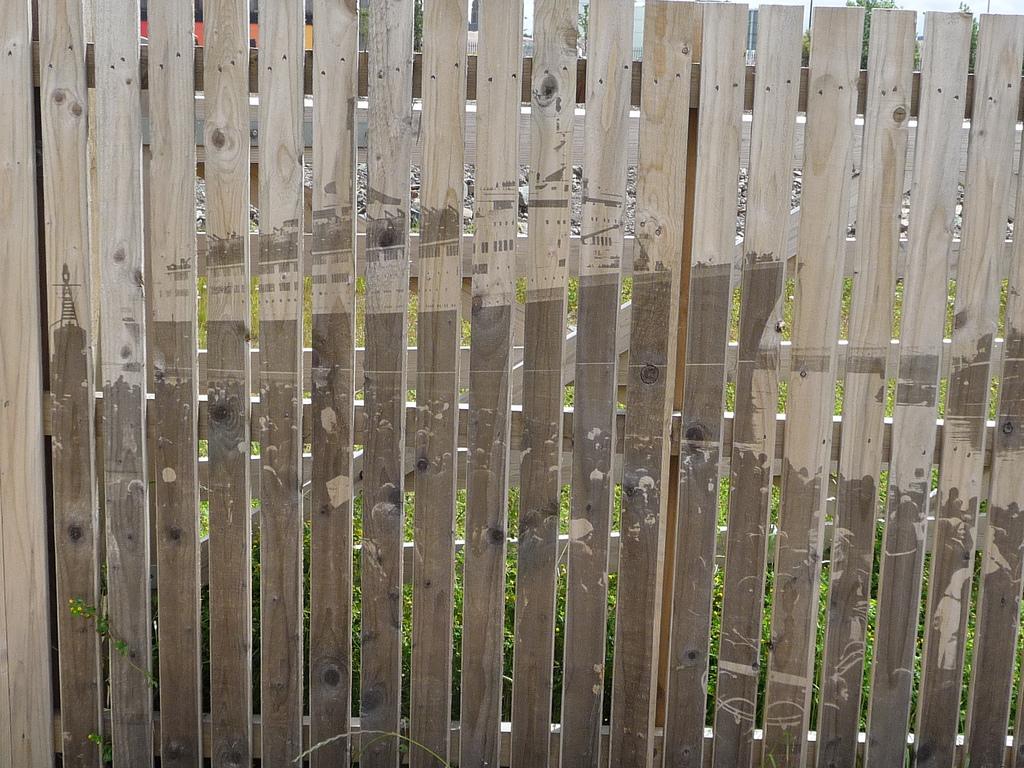Back in 2009 a 180 metre long timber fence was printed with period shipyard images at the Queens Quay dockside regenerations project in Clydebank, Glasgow. On the site of the former Kvaerner shipyard, the fence leads from the river bank to new Clydebank College.
The path, formerly the launch slipway which launched the QE2 and Queen Mary into the river Clyde, is lined on two sides by a timber slatted fence, comprising 33 printed panels 1.5 metres tall by up to 3 metres wide. Each panel depicts scenes acknowledging the shipbuilding heritage of the location. The project was conceived by Mike Harrison of Ian White Associates of Stirling, landscape architects for the project.
The images were created from old photographs of shipyard workers, ships under construction, and some of the famous vessels produced. Each image was divided into 70mm wide strips, which were then printed onto individual fence slats by Timbermark. The technology used was Timbermark’s high resolution inkjet printing system, using a black waterproof and fade proof ink. The print quality accurately reproduced the photographs on the rough sawn fencing slats used for the project. The print was successfully applied over the green tannalith treatment and will remain black as the timber background fades from green to grey.
Several technical and operations challenges were overcome during the project. The project was planned so that the slats each had a unique identification, and were bundled into sequences so that the fence erectors, Alter Landscapes of Lochwinnoch, could fix the slats in the right order. A custom software utility was developed by Timbermark to advance automatically the next message loaded in the printer, so that the throughput was speeded up. Printers with additional memory were used, as the slat images were significantly larger file sizes than is typically used for grade stamping.
This project was the first of its kind.

